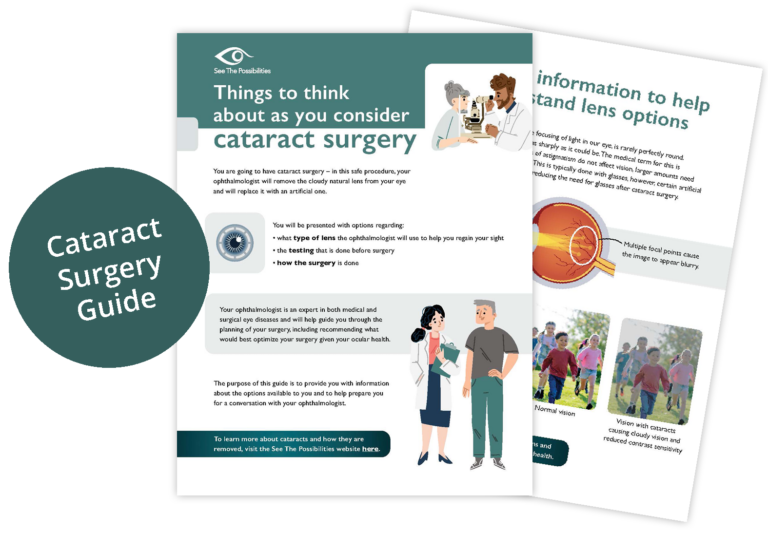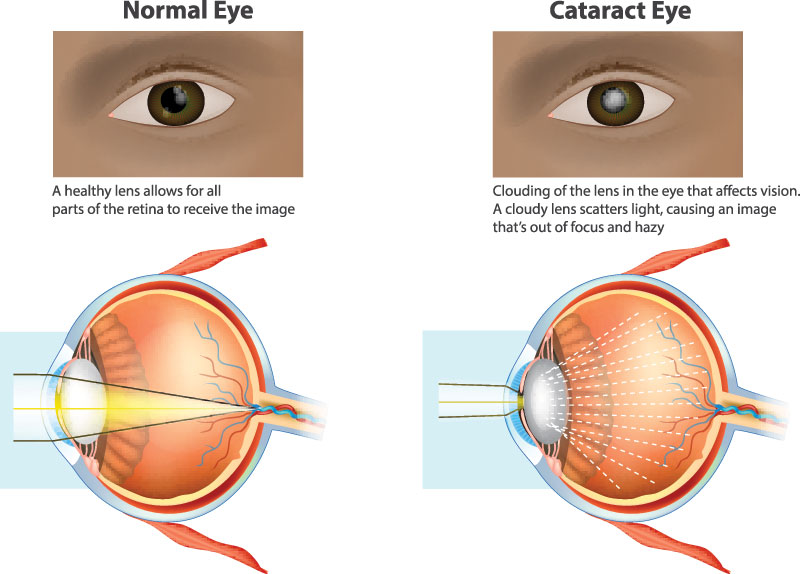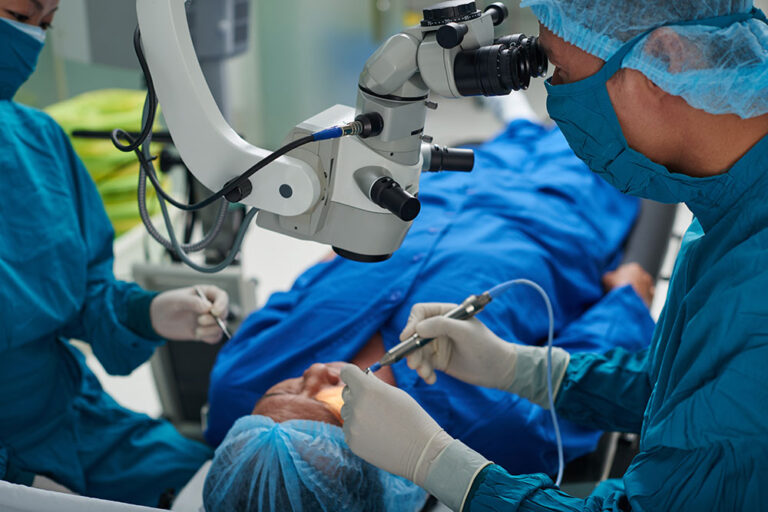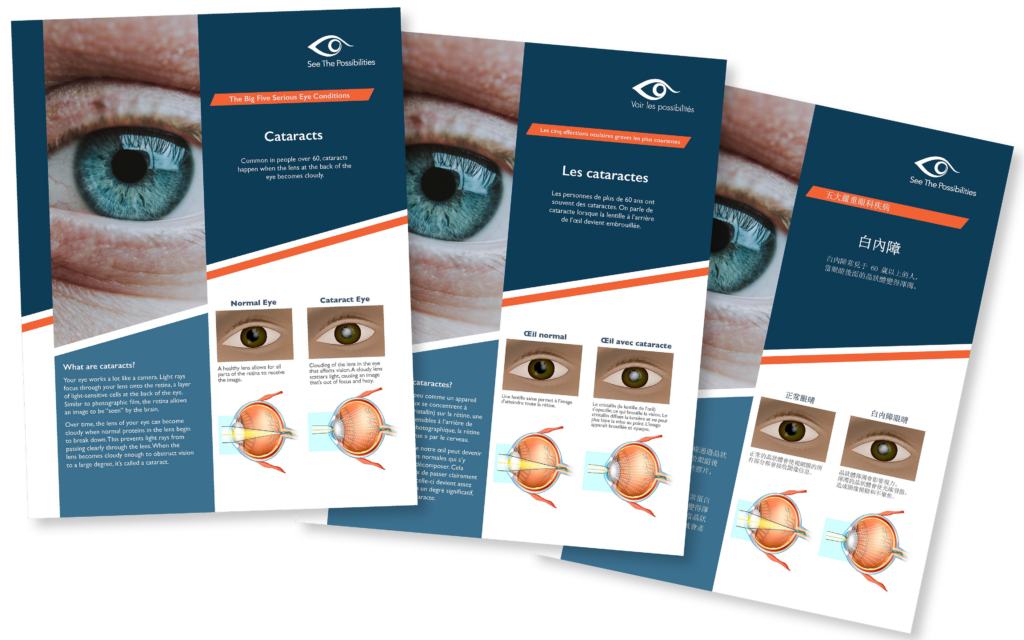Preparing for cataract surgery?
This guide can help you understand your artificial lens options and make the most of your ophthalmologist appointment.

What are cataracts?
Your eye works a lot like a camera. Light rays focus through your lens onto the retina, a layer of light-sensitive cells at the back of the eye. Similar to photographic film, the retina allows an image to be “seen” by the brain.
Over time, the lens of your eye can become cloudy when normal proteins in the lens begin to break down. This prevents light rays from passing clearly through the lens. When the lens becomes cloudy enough to obstruct vision to a large degree, it’s called a cataract.

Cataracts can cause cloudy vision.

Cataracts usually develop slowly, causing a gradual and painless decrease in vision. Changes you might experience include:
- Blurry vision
- Glare, particularly at night
- Frequent changes in your eyeglass prescription
- A decrease in colour intensity
- A yellowing of images
- Improved close-up vision for farsighted (presbyopic) people
- Reduced distance vision for nearsighted (myopic) people
The loss of transparency may be so mild that vision is barely affected, or it can be so severe that no shapes or movements are seen – only light and dark.
Causes
The most common cause of cataract is aging. Normal changes to the eye start happening around the age of 40. People over the age of 60 usually start to experience some lens clouding. Occasionally, babies are born with a cataract.
Risk Factors
The following factors can lead to cataracts:
- Being over the age of 60
- Eye injury
- Some medications (e.g., steroids)
- Systemic diseases such as diabetes
- Being a smoker
- Spending a lot of time in the sun without sunglasses that protect your eyes from harmful ultraviolet (UV) rays
- Having close family members that have cataracts
Reducing your exposure to ultraviolet light by wearing a wide-brimmed hat and sunglasses may reduce your risk for developing a cataract, but once one has developed, there is no cure except to have the cataract surgically removed.
Diagnosis
To see if you have cataracts, your eye doctor will ask you about your medical history and the symptoms you have. They will also perform an eye exam and conduct a few tests:
Visual acuity test
This test helps your eye doctor see if you’ve had any worsening in your vision. You’ll be asked to look at an eye chart with different sizes of letters on it. Your doctor will test one eye at a time, with the other eye covered.
Slit-lamp examination
A slit lamp allows your eye doctor to view different parts of your eye (cornea, iris and lens) up close to see if there are any problems. This device is called a “slit lamp” because it uses a bright line of light to illuminate the different parts of your eye.

Treatment

Eyeglasses
Eyeglasses or contact lenses can usually correct slight vision changes caused by early cataracts, but they cannot sharpen your vision if you have a severe cataract.
Cataract surgery
If a cataract is affecting your vision enough to interfere with your normal lifestyle, it may be time to consider cataract surgery. Your ophthalmologist can help you decide if surgery is the best option for you.
During this outpatient surgical procedure, an ophthalmologist removes the cataract by making a small opening in the cornea at the front of the eye. The cloudy lens is broken into small pieces and removed through an ultrasonically vibrating needle that acts as a miniature “jackhammer”. A synthetic intraocular lens (IOL) is inserted to replace the focusing power of the natural lens.
You can learn about the different types of lenses and which option may be right for you in our Cataract Surgery Guide.
Cataract surgery is a very successful operation. One and a half million people have this procedure every year in North America, and over 95% have a successful result.





